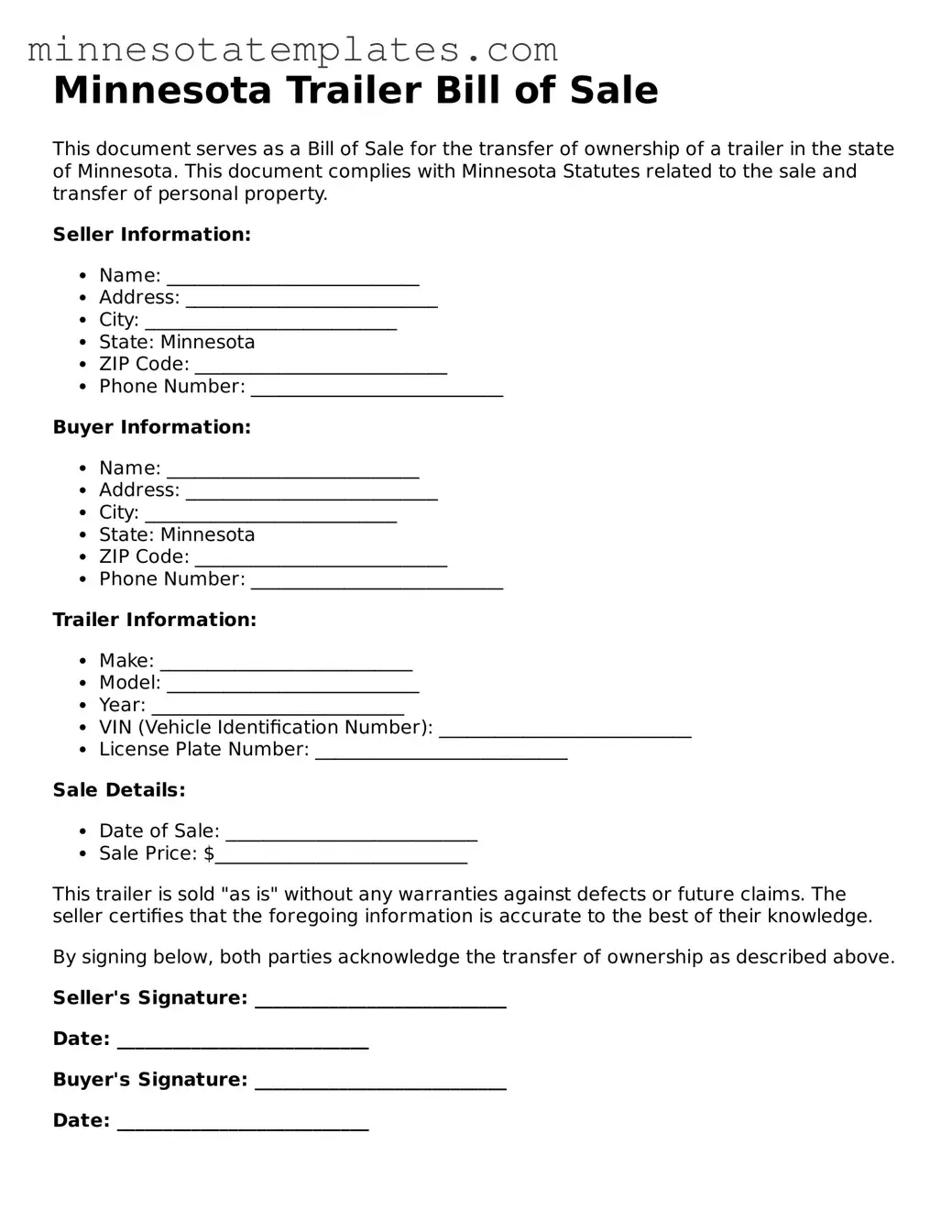Valid Trailer Bill of Sale Form for the State of Minnesota
The Minnesota Trailer Bill of Sale form serves as a legal document that records the sale of a trailer from one party to another. This form includes essential details such as the buyer's and seller's information, trailer specifications, and the sale price. Completing this form ensures a smooth transfer of ownership and protects both parties involved in the transaction.
To fill out the Minnesota Trailer Bill of Sale form, click the button below.
Access Your Form Now
